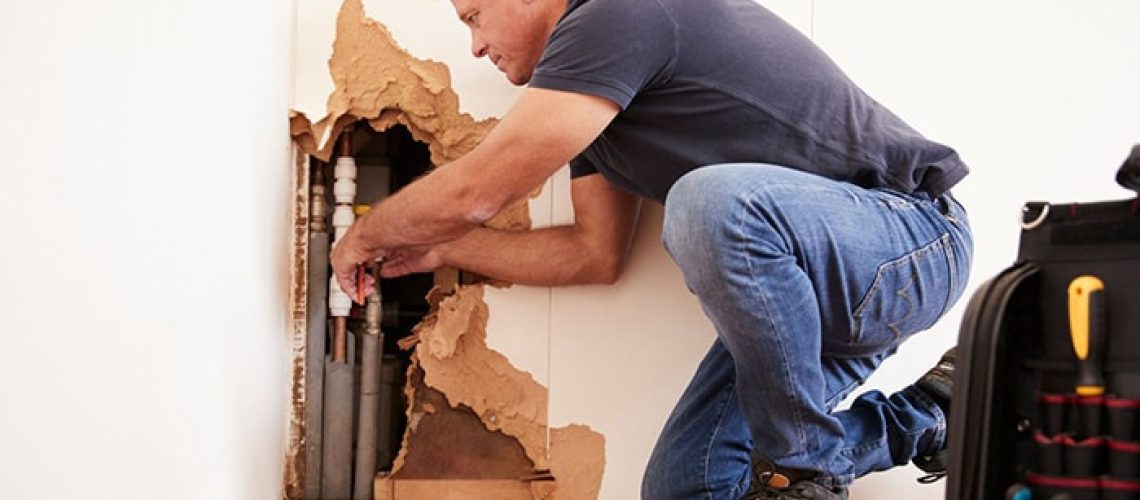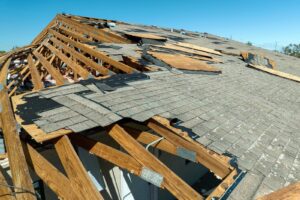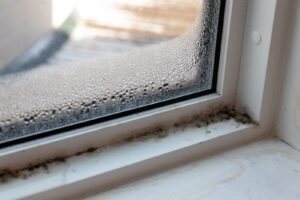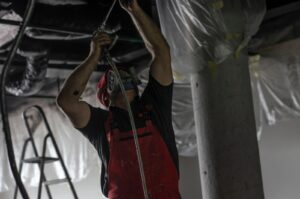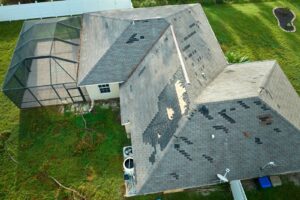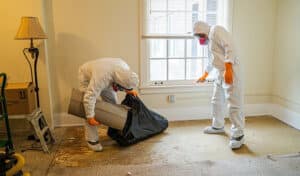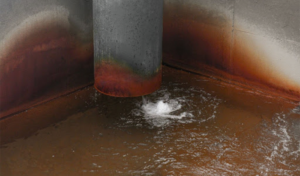Water damage in your home often feels like a storm cloud hanging over your head. Whether it’s a leaky faucet that’s been ignored for too long or a sudden flood from a heavy rainstorm, the intrusion of water into places it shouldn’t be can lead to serious headaches.
But not all water damage is created equal.
From the clean water that spills out of a burst pipe to the downright nasty black water from sewage backups, each type brings its own set of challenges and repair needs.
This blog dives deep into the murky waters of water damage, breaking down the different types, how to spot them, and, most importantly, how to fix them. So grab a bucket and a mop, and let’s get to work on understanding the different types of water damage and how to repair them.
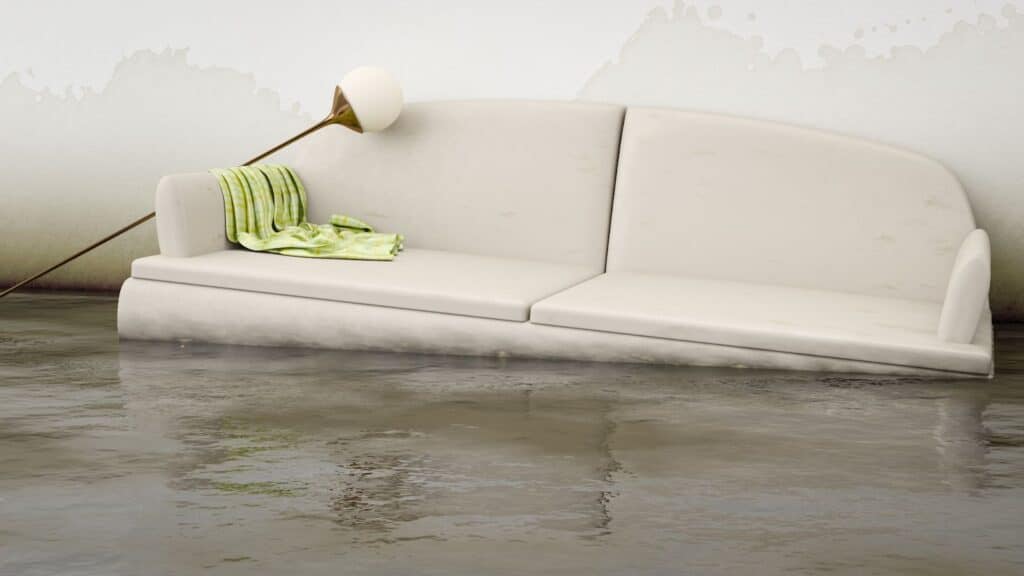
Types of water damage
There are three types of water damage: clean, gray, and black.
Clean water damage
Clean water damage, the most benign of the trio, originates from sources you’d typically consider safe. Imagine a scenario where a water supply line bursts or excessive rainwater finds its way into your home.
Although this type of water doesn’t pose immediate health threats, don’t let your guard down. If left unattended, clean water can escalate into more serious types of damage, wreaking havoc on furniture, carpets, and the structural integrity of your home.
Gray water damage
Gray water damage ups the ante with its slightly contaminated nature. This water has made contact with chemicals, food particles, or dirt, turning it into a potential health risk. Common culprits include malfunctioning dishwashers, washing machines, and toilet overflows without feces.
Gray water carries microorganisms and nutrients for bacteria, meaning that if it’s not addressed quickly, it can degrade into black water, making the situation more hazardous and complicating the cleanup process.
Black water damage
Black water damage is the most severe and dangerous form to deal with. This category includes water contaminated with fecal matter, pathogens, or toxic chemicals, such as sewage leaks, floodwaters, or toilet backflows containing feces.
Harmful microorganisms and substances in black water pose a significant health risk, requiring immediate, professional attention to ensure a safe and thorough cleanup. Handling black water damage goes beyond basic repair efforts; it’s about safeguarding the health of occupants and restoring a safe living environment.
Now that we’ve gone over the different types of water damage, let’s look at how to repair water damage with our step-by-step guide.
Water damage repair: A step-by-step guide
Water damage repair is a nightmare for any homeowner. Whether the damage is caused by a leaky pipe, a flooded basement, or a burst water heater, it’s crucial to take immediate action to minimize the damage and prevent further complications.
Step 1: Ensure safety first
Before you begin the water damage repair process, it’s essential to prioritize safety. Ensure you turn off the electricity if there’s a risk of electrical shock and wear protective gear like rubber gloves and boots.
Depending on the extent of the damage, it might be necessary to evacuate your home temporarily until it’s safe to return. If you are unsure, it’s best to contact a professional water damage specialist for a water damage inspection.
Step 2: Remove the water
Once you’ve identified the type of water damage through a water damage inspection, it’s time to remove the excess water from your home. Use a wet/dry vacuum or mops and buckets to extract as much water as possible. Ensure proper ventilation by opening windows and doors. Depending on the severity of the damage, you might also need to call in professionals equipped with industrial-grade drying equipment.
Step 3: Dry the affected areas
After removing excess water, it’s vital to thoroughly dry the affected areas to prevent molds and mildew from thriving.
Use fans, dehumidifiers, or open windows to improve air circulation and speed up the drying process. Consider removing soaked carpets, rugs, and furniture to dry them separately. If necessary, consult professionals who specialize in water damage restoration to ensure proper drying techniques.
Step 4: Clean and sanitize
To rid your home of potential health hazards, it’s crucial to clean and disinfect all affected surfaces. Use a mild detergent mixed with water to gently scrub walls, floors, and furniture. For gray or black water damage, it’s recommended to use a disinfectant solution to kill bacteria and prevent future contamination. Rinse thoroughly and allow surfaces to dry completely.
Step 5: Repair and restore
Now that your home is dry and clean, it’s time to address any structural damages caused by the water. Look for signs of warped flooring, peeling paint, or damaged drywall. Repair or replace any compromised materials to prevent further deterioration.
If you’re uncertain about repairs, it’s wise to consult professionals who have the expertise to assess the structural integrity of your home and provide appropriate solutions.
Step 6: Prevent future water damage
Once you’ve completed the water damage repair, take preventive measures to avoid a recurrence. Regularly inspect and maintain your plumbing system, including pipes, faucets, and appliances, to identify any leaks or issues.
Install water leak detection systems and consider purchasing flood insurance if you live in a high-risk area. Promptly address any minor leaks to prevent them from escalating into major problems.
Remember, repairing water damage requires proper knowledge and attention to detail. Make sure you stay informed, follow safety precautions, and do not hesitate to seek professional assistance when necessary. By acting swiftly and following these steps, you can restore your home effectively and prevent future water damage woes.
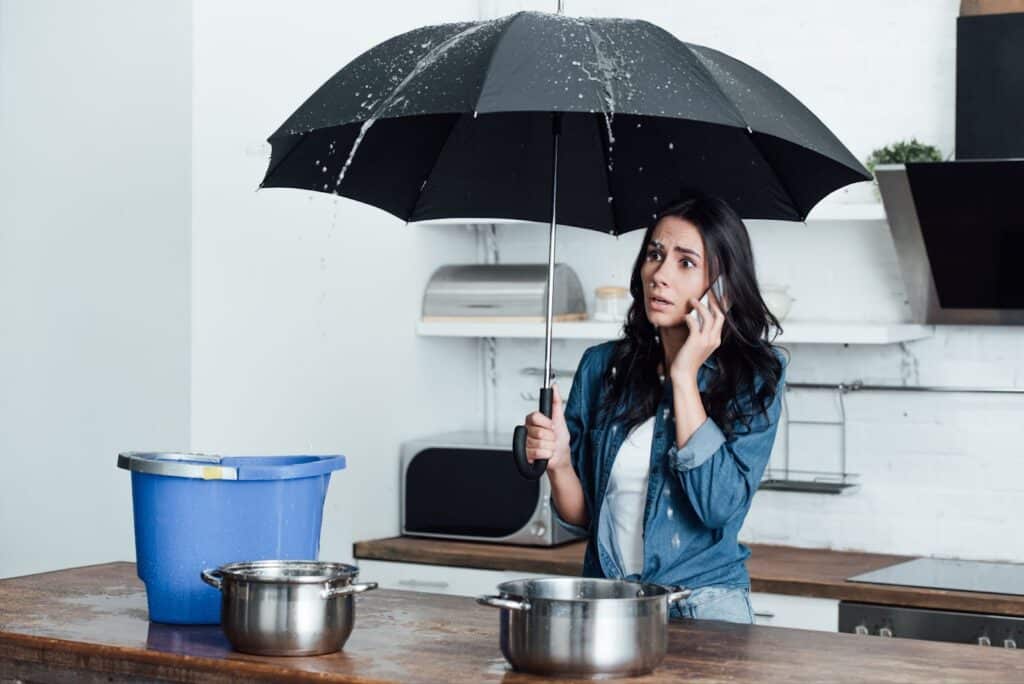
What happens if you leave water damage unattended
Compromised structural integrity
The very skeleton of your home is at risk when water damage lingers. The foundation can suffer silently, leading to cracks, shifts, and even catastrophic failure over time. Similarly, wooden beams and structures, the bones of your home, are capable of absorbing water, leading to rot, warping, and compromised structural integrity that’s both dangerous and costly to repair.
Mold and mildew growth: A silent invasion
The most insidious consequence of untreated water damage is the rapid growth of mold and mildew. These unwelcome invaders not only pose serious health risks, such as respiratory issues and allergic reactions, but can also spread like wildfire, infesting air ducts, walls, and even furniture. This isn’t merely a surface issue; it’s an air quality issue, turning your home into a health hazard zone.
Electrical hazards: A shocking reality
Water and electricity are a dangerous mix. Water damage quietly corrodes your home’s electrical system, leading to short circuits, malfunctioning appliances, and even the terrifying prospect of electrical fires. The risk isn’t immediate; damaged wiring can remain a hidden hazard long after the water recedes.
The impact on property value
When it comes time to sell, untreated water damage and the mold that often accompanies it dramatically decreases your home’s market value. Beyond the visible damage, the stigma attached to water damage and mold may deter potential buyers, turning your investment into a tough sell.
Pest infestations: Uninvited guests
Lastly, the damp conditions left by untreated water damage create a welcoming environment for pests. Termites, carpenter ants, and rodents, all of which can cause further damage and carry diseases, are attracted to moist environments. This not only exacerbates the problem but also introduces new health risks.
Understanding your home’s water damage insurance coverage
Navigating the waters of home insurance in the wake of water damage can feel as daunting as the damage itself. Understanding the ins and outs of your policy will help ensure you’re covered when unexpected leaks or floods hit your home.
The basics of water damage insurance
Standard homeowners’ insurance policies typically cover water damage when it’s sudden and internal, like from a burst pipe or a malfunctioning appliance. However, it’s not all smooth sailing. These policies often exclude certain types of water damage, particularly those arising from external sources like natural floods or water seeping in from the ground. Knowing the fine print of your policy is essential to avoid surprises during a crisis.
Charting additional coverage options
For those in flood-prone territories, standard policies won’t cover flood damage. Here’s where separate flood insurance comes into play, offering an additional layer of protection. Similarly, sewer backup — a common but nasty source of water damage — is not typically covered. Adding a sewer backup rider to your policy will save you from a potential financial quagmire.
Navigating claims and documentation
When water damage strikes, document everything. Snap photos, jot down details, and maintain a log of all affected items. This meticulous documentation is your best ally when filing a claim. When it comes to the claims process, prompt communication with your insurer is key. Provide all necessary documentation and keep a log of all interactions, ensuring a smoother journey through the claims process.
Restoremasters
Feeling overwhelmed by water damage? Take a deep breath and let Restoremasters turn the tide for you. Our expert team specializes in all things water damage, from initial water damage inspection to final restoration.
Don’t let water damage dampen your spirits or your home’s integrity. Reach out to Restoremasters today, and let’s chart the course to a dry, safe, and restored home together. Whether it’s clean, gray, or black water damage, we’ve got the expertise and equipment to make your problems a thing of the past.
Contact Restoremasters now and take the first step toward a water-damage-free home!

